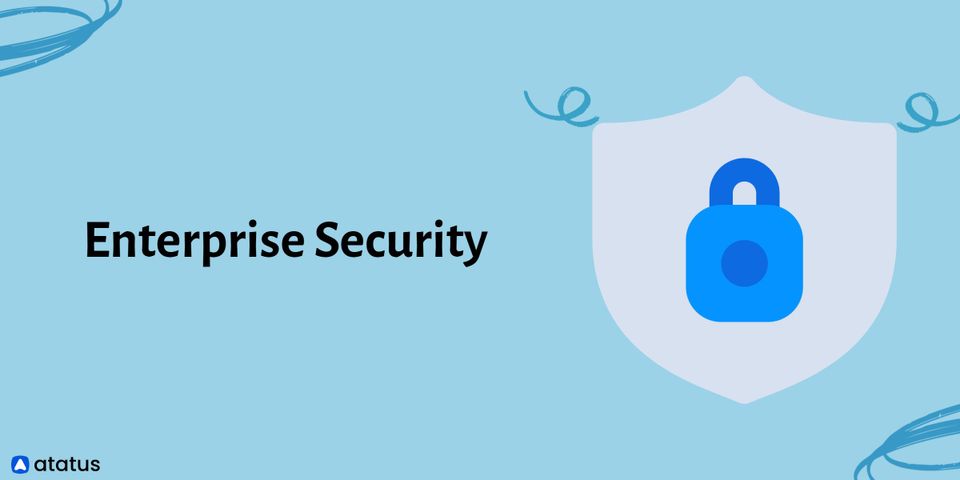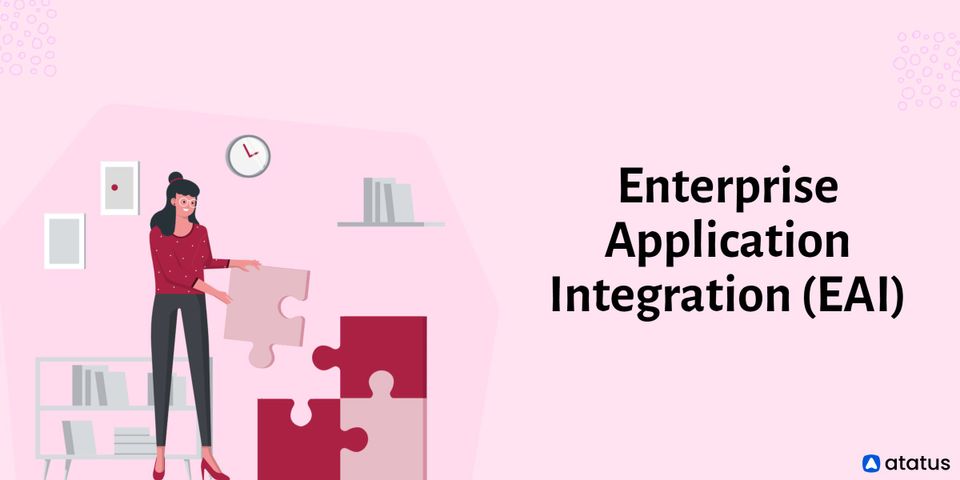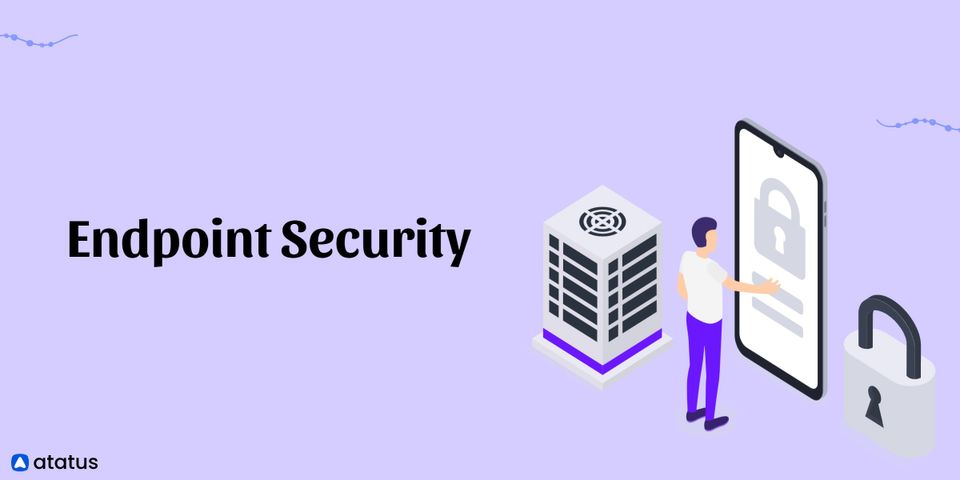For businesses, enterprise security has become extremely important. When clients do business with an enterprise, they provide that company with a great deal of personal information. They expect the company to maintain such information safe and secure in exchange.
We will go over the following:
- What is Enterprise Security?
- Enterprise Security Architecture
- Practices for Enterprise Security
- Challenges in Enterprise Security
- Why Enterprise Security is Important?
What is Enterprise Security?
Enterprise Security is a multi-faceted issue that encompasses both a company's internal or proprietary business secrets as well as employee and customer data subject to privacy laws. As prominent worldwide corporations have all faced substantial fines and government action as a result of the theft of sensitive customer data to hackers, enterprise security is becoming increasingly important.
Whereas previously, enterprise corporations were most concerned with protecting their proprietary code or trade secrets from competitors and counterfeiters, they are now confronted with new data privacy laws that can result in significant financial penalties for companies that misuse or lose customer information. The move to cloud infrastructure for business process support has created new issues for corporate IT security.
Enterprise security relies on data centres, networking, and web server operations, but it all begins with human resources. It also includes the people and policies that organizations employ to safeguard their network infrastructure, which includes assets like devices and endpoints. Enterprise security considers the legal structures that apply to an organization's data since it must focus on preserving a company's security posture within the constraints of the law.
Enterprise Security Architecture
The enterprise security architecture must protect against social engineering and malware threats while ensuring secure physical access. A hostile actor could use their access to escalate their privileges or browse to other portions of the network to compromise them, therefore any system that requires a password before giving admission needs to be safeguarded. This may entail the use of multi-factor authentication (MFA) and the restriction of who has access to particular systems.
The network firewall is regarded as the primary defence against hostile cyberattacks. The ability to scan packet data in real-time for potential viruses, malware, worms, and ransomware is now included in most network firewall software packages.
The issue with anti-virus scanning is that it is an ex post facto security approach that relies on professional agencies to discover malware before it is noticed. In “zero-day” attacks, exploit code is used to breach a network, software platform, firmware device, or operating system that has never been exposed or classified by security experts. Since zero-day attacks cannot be prevented in advance, businesses must develop multi-tiered security procedures that isolate and contain risks once they occur.
After physical access limits, the use of encryption on data transfers, and the implementation of firewall settings for allowed user access are the two most important parts of enterprise security. To combat cracking attacks, most platforms with user sign-on systems now feature lock-out procedures that cut users off after 5 or more failed password logins. IP blocking can be used to reduce the number of unidentified login attempts coming from a single IP address.
Anti-virus software works with firewall software to compare data packet transmissions with known malware signatures in real-time, identifying hazardous files and preventing the unintentional installation of viruses, worms, and trojans through phishing attacks or downloads. Web application firewalls (WAFs) can be installed to protect web forms against cross-site scripting and MySQL injection attacks. A CDN is also used by many enterprise companies to detect and prevent DDoS attacks in production.
Practices for Enterprise Security
While there are numerous techniques to protecting an organization's digital assets, there are a few best practices that every business should follow.
#1 Secure Your Data
It's critical to take advantage of data encryption if it's possible. Because it's difficult to predict where a hostile actor will try to eavesdrop on signals, encryption should be used across your whole network if at all possible.
#2 Control Identity and Access Management (IAM)
When it comes to safeguarding your network, you'll want to follow the principle of least privilege. Only those who absolutely require access to a network segment or a business-critical application are permitted with the least privilege. If someone else wants to get in, even if they have a higher status than those who already have, they will be unable to interact with that region, application, or data.
This safeguards the network from even unintentional incidents such as when someone with excessive privileges leaves access credentials laying about, or their phone or other personal device is stolen, exposing login credentials.
#3 Effective Disaster Recovery Plans
It's vital that critical systems are backed up and operational as soon as feasible in the case of a disaster. This may involve redundant systems and components capable of handling the workload needed to keep the company running.
While creating redundancy across the entire architecture may be impossible, important systems can be identified and supported with redundant components and procedures. These systems can be immediately restarted in the event of a disaster, reducing downtime to minutes rather than hours or days.
#4 Teach Employees about Cybersecurity
Many typical errors that result in serious breaches can be avoided by educating employees about their security duties. Employees, for example, can be educated to spot phishing attacks, which utilize email or text attachments to encourage individuals to click and download malware. Employees can also be educated on how to keep track of any MFA devices they use, as well as how to secure their passwords and login credentials.
#5 Manage Endpoints
To serve their customers or employees, modern enterprises may be compelled to deal with a large number of endpoints and devices. It's critical to ensure that these are properly secured and that they can't be exploited to attack the rest of the network.
#6 Use Your Resources
If you have any questions or concerns, you'll be able to contact a number of experts. Make use of all of the resources at your disposal to guarantee that your business security management solutions are performing to their greatest potential.
Challenges in Enterprise Security
Changes in threat situations and the rising use of specific technologies require enterprise security to change and adapt. These technologies include those that are relatively new to the industry as well as those that are being employed in new directions. They are as follows:
- Demand for Data
Machine learning allows for strong insights to be derived from enormous data sets. The requirement to store and safeguard this data, on the other hand, poses significant issues, especially as the data and its uses become more diversified. - Internet of Things (IoT)
Since the number of IoT devices is expanding at a faster rate than the solutions to defend them, the attack surface may be growing faster than the solutions to secure it. - The Cloud
Data is more vulnerable when it is not kept locally. - Regulations on Data Privacy
In recent years, costly, embarrassing, and dangerous data leaks have dominated the news, prompting new, more strict data protection legislation. The problem of designing and automating policies to support these regulations is never-ending.
Why Enterprise Security is Important?
Since the scale of the threat to businesses is huge and will continue to grow in the future, enterprise security is critical. Nearly every online contact an organization engages in is currently vulnerable to threats—even routine exchanges like emails.
While it's easy to take email conversations for granted, the threat to the information included inside them, as well as the login passwords for email accounts, is constant. Packet sniffers, for example, can categorize traffic based on what they detect within the packets being broadcast. They can try to intercept communication if they discover potentially important information.
Additionally, attackers can utilize distributed denial-of-service (DDoS) attacks to bring down a company's website, leaving it inaccessible to genuine users. These attacks may appear to be random, yet they are generally the result of months of planning and investigation. You may get ahead of attackers by putting in place proper enterprise security measures, which will prevent their attempts to break into your system.
Enterprise security encompasses education and training that empowers employees to make wise decisions in support of more secure connections, in addition to the technology that can be utilized to defend your network. Internal and remote employees can be trained to spot dangers, respond appropriately, and report them to IT administrators or cybersecurity engineers.
Furthermore, when employees learn how to deal with probable situations, the barriers between IT and other departments can be removed. This helps to break down divisions and bring the organization together around a single aim of data security.
Conclusion
In today's world, having effective and well-maintained enterprise security is a must. Bad actors search the web for vulnerable targets, thus having a strong corporate security policy is essential for establishing a defensive posture that raises the bar high enough for those with malicious intent to move on to a less vulnerable target.
Monitor Your Entire Application with Atatus
Atatus provides a set of performance measurement tools to monitor and improve the performance of your frontend, backends, logs and infrastructure applications in real-time. Our platform can capture millions of performance data points from your applications, allowing you to quickly resolve issues and ensure digital customer experiences.

Atatus can be beneficial to your business, which provides a comprehensive view of your application, including how it works, where performance bottlenecks exist, which users are most impacted, and which errors break your code for your frontend, backend, and infrastructure.





